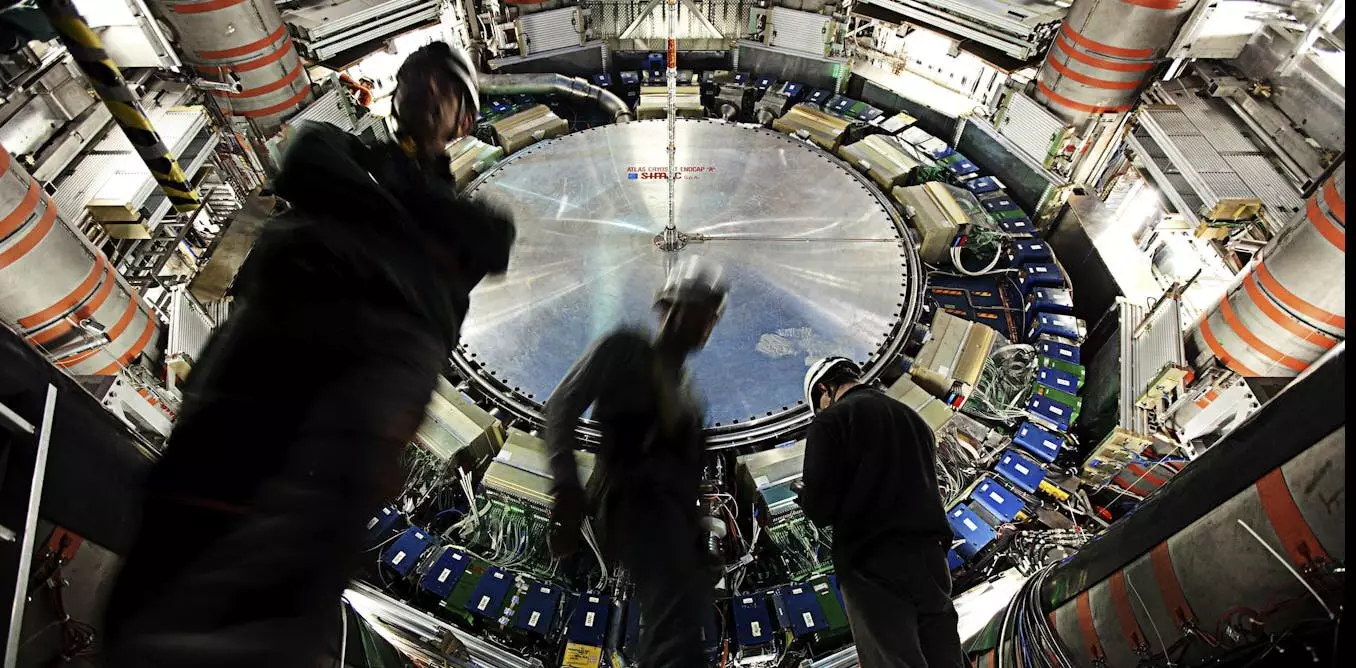When we delve into the complexities of quantum physics, one of the most captivating phenomena that arises is known as quantum entanglement. This intricate phenomenon has not only puzzled physicists for decades but has also opened doors for groundbreaking discoveries. A recent study conducted by the ATLAS collaboration at the Large Hadron Collider (LHC) in Geneva has expanded our understanding of entanglement by observing it in top quarks—the heaviest particles identified to date. This article will explore the concept of entanglement, its implications, and the significance of this latest discovery.
Understanding Quantum Entanglement
At its core, quantum entanglement challenges our classical intuition about how objects interact with one another. Typically, we comprehend the world in terms of separateness and connectivity; easy paradigms such as two distinct balls located at opposite ends of a room. However, entangled particles defy this straightforward categorization. They exist in a state of interdependence where the measurement of one particle instantly determines the state of another, regardless of the distance separating them. This phenomenon accentuates the fundamental mystery of quantum physics—how two particles can exhibit correlated behaviors without any observable connection.
Historically, entanglement has been demonstrated primarily with photons—light particles—and systems at lower energy levels, laying a fascinating groundwork for quantum mechanics. Yet, the ATLAS experiment’s recent achievement marks a significant milestone. For the first time, researchers have observed entanglement among pairs of top quarks, the heaviest and least understood constituents of matter. This observation not only reinforces the principles of quantum entanglement but also pushes the boundaries of our knowledge into the realm of high-energy physics.
To appreciate the significance of this discovery, one must understand the role of top quarks in the standard model of particle physics. Top quarks, approximately 184 times the mass of a proton, present an intriguing enigma within the framework of known forces and particles. Their enormity raises critical questions about the fundamental structure of matter—why such a heavy particle exists and what governs its properties.
In the journey of particle physics, entanglement in top quarks may offer clues to new physics beyond the standard model. While physicists have established four fundamental forces—gravity, electromagnetism, the weak nuclear force, and the strong nuclear force—the peculiar nature of the top quark hints at the potential existence of an undiscovered force or phenomena influencing its mass. This discovery from the LHC may help scientists unravel the intricate tapestry of forces and materials that constitute the universe.
Entanglement is not merely a theoretical abstraction; it has profound practical implications as well. Researchers are exploring how entangled particles can foster advancements in technology, especially in quantum computing and cryptography. The unique properties of entanglement could lead to the development of ultra-secure communication channels transcending the limits of classical technology.
However, while the results from ATLAS provide tantalizing insights into the behavior of top quarks and their entangled states, they are not expected to lead to immediate technological breakthroughs. The complexities surrounding the Large Hadron Collider—both in its immense scale and the energy levels at which these observations were made—render it impractical for everyday applications. Instead, the findings serve as a sophisticated tool for experimental inquiry, deepening our understanding of the underlying principles governing the material universe.
Despite the promising prospects presented by quantum entanglement, one must acknowledge its delicacy. Achieving and maintaining an entangled state in a laboratory setting is fraught with challenges. Most successful experiments require ultra-cold environments to mitigate any disturbances that might disrupt the entangled particles. The fragility of entanglement illustrates a critical aspect of quantum mechanics, emphasizing that while the entangled state is achievable, it remains susceptible to external perturbations.
Given the technical challenges and the necessity for precise conditions, the recent insights into top quarks provide researchers with a new avenue for exploration. With their hefty mass providing a conducive experimental framework, physicists can examine the relationships and behaviors intrinsic to these enigmatic particles.
The discovery of entanglement in top quarks signifies a remarkable step forward in our understanding of quantum mechanics. As researchers continue to explore this intricate phenomenon, we may unlock new realms of knowledge that challenge existing paradigms and pave the way for future advancements in both theoretical and applied sciences. The interplay between entanglement and the fundamental structure of matter may redefine our approach to physics and technology in the years to come. The mysteries of the quantum realm are far from fully unveiled, and each discovery brings us a step closer to comprehending the intricacies of the universe around us.

